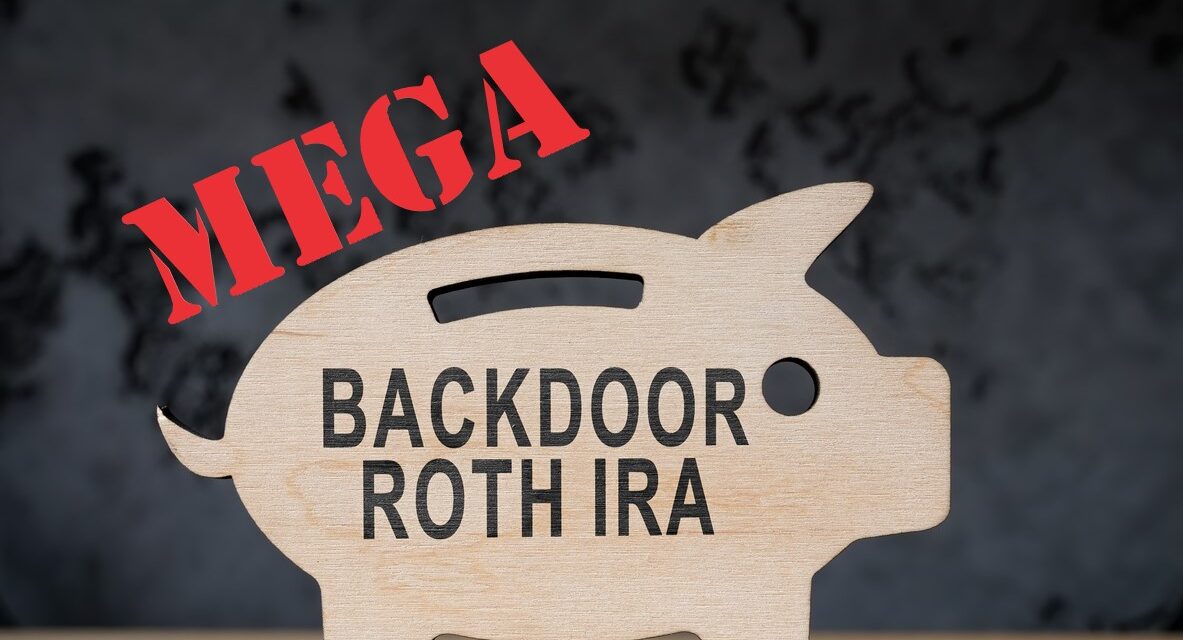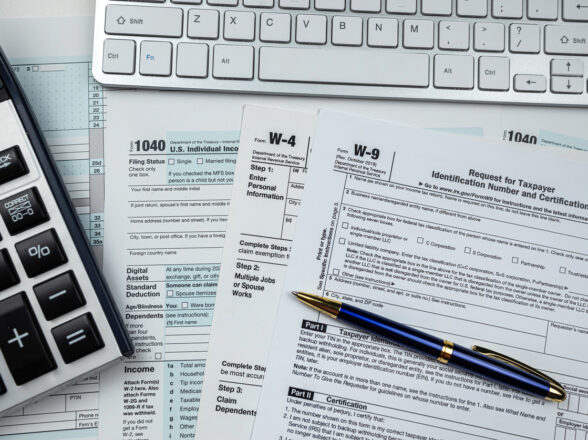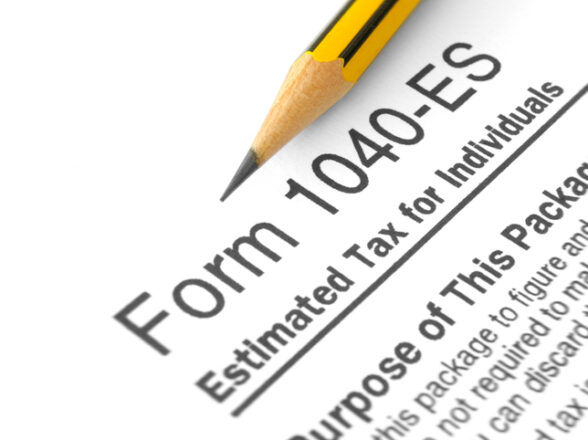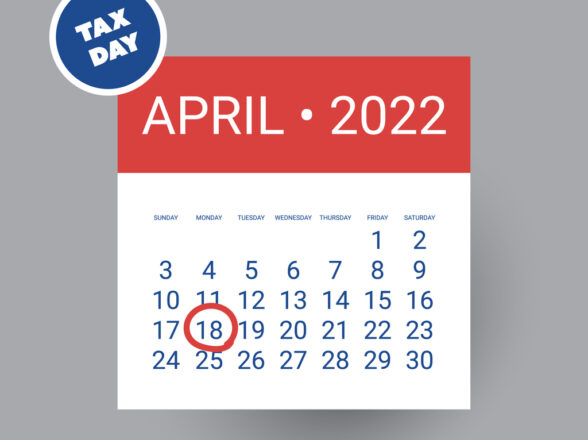Blog
Mega-Backdoor Roth IRA: A Comprehensive Guide to How it Works

Every now and then, in the far reaches of the retirement savings world, there is an oddball angle that can really make a positive difference in investors’ ability to save. One of those strategies is the not-so-widely-known Mega Backdoor Roth IRA. This one is so obscure, a current client brought it to our attention (Thanks Brian R.). Not only do we not know everything this is to know about personal finance, but we welcome a, “hey, did you know….” once in a while!
Let’s first dive into the plain vanilla Roth IRA. Arguably one of the most powerful tools investors have to build their retirement savings and help to control their taxes. However, according to the IRS, you can only contribute to a Roth IRA if you meet the following conditions:
- You’re married filing jointly or a qualifying widow(er) with an adjusted gross income (AGI) of less than $204,000.
- You file single or head of household and have an AGI of less than $129,000.
- You’re married, file separately, don’t live with your spouse, and have an AGI of less than $129,000.
You can also make a reduced amount of Roth IRA contributions if you exceed the above income thresholds, but only if:
- You’re married filing jointly or a qualifying widow(er) with an AGI of $204,000 to $214,000.
- You file single or head of household and have an AGI of $129,000 to $144,000.
- You’re married, file separately, don’t live with your spouse, and have an AGI of $129,000 to $144,000.
If your income exceeds the above upper limits, you cannot contribute to a Roth IRA. The limits are based on your gross income, which includes dividends, capital gains, business income, retirement distributions, etc., without any adjustments such as alimony payments, contributions to a retirement account, student loan interest, etc.
This income limitation and the contribution limit of $6,000 ($7,000 if you are above 50) means people with higher incomes cannot contribute to a Roth IRA, and those who can only contribute a limited amount. That is where a mega backdoor Roth comes in.
What is a Mega Backdoor Roth?
A mega backdoor Roth is a strategy that offers a work-around to save money for retirement in a Roth IRA if your income exceeds the IRS limits and, most importantly, your current employer allows for the strategy in the first place. To execute the backdoor Roth, you roll over money from your 401(k) to your Roth account.
However, there is a catch. You fund your 401(k) with pre-tax dollars, and a Roth account holds after-tax dollars. So, if you roll over your 401(k) account to either Roth 401(k) or Roth IRA, you must pay income tax on any pre-tax contributions and any untaxed earnings in the account. But you won’t pay any taxes on after-tax contributions and when you make qualified withdrawals later at retirement.
The mega backdoor Roth IRA has been around for a long time, but it only gained interest and popularity because of the IRS guidance that addressed it.
How a Mega Backdoor Roth Works
For 2022, the maximum employee contribution limit for a 401(k) account is $20,500 (or $27,000 if you are 50 or older).
You can add up to $40,500 of after-tax dollars to the contribution limit for a total of $61,000, which is the maximum that a backdoor Roth IRA allows. But that’s only if you don’t get an employer match.
If your employer matches your contributions, you have to deduct their contributions from the $40,500 to arrive at the figure that you can contribute with after-tax dollars. For example, if your income is $500,000 a year and your employer offers a 3% match, subtract $15,000 ($500,000 x 3%) from the $40,500. So, you will be able to contribute an additional 34,500.
Once you make this contribution, at least a day later, you can take all the after-tax contributions and roll them over to your Roth IRA or Roth 401(k). It will allow your money to grow tax-free instead of tax-deferred. It would be best to roll over as soon as possible to minimize the likelihood of the funds seeing any investment returns because they will be taxed when rolling over.
How to Do a Mega Backdoor Roth
To successfully do a mega backdoor Roth, you must approach it methodically to avoid penalties. But not everyone is allowed to execute a mega backdoor Roth. Three conditions have to be met before attempting. They are:
-
A 401(k) plan that allows after-tax contributions
A 401(k) plan typically allows pre-tax contributions, so you have to ensure yours allows after-tax contributions. It varies with employer plans.
-
In service distributions
In most retirement plans, you only become entitled to distributions on termination of employment. To rollover funds from your 401(k) to your Roth account, the 401(k) account needs to allow in-service distributions. That is, distributions when still employed. If it doesn’t, you might have to wait until you leave the job or reevaluate your retirement saving strategy.
You can ask the human resource department or your plan administrator if you aren’t sure whether your organization’s policies allow it.
-
Spare cash
This goes without saying. If you have some money left over to save after maxing out your contributions in your retirement plans, you can execute the mega backdoor Roth. You would be better off maxing them out first to benefit from the tax advantages fully.
If you are within the income limits for a Roth IRA, it would be best if you opened a Roth IRA account and contributed directly instead of going through all the hoops to execute the mega backdoor Roth.
If your retirement plan(s) meet the above conditions, you can execute a mega backdoor Roth using the steps below:
Step 1: Open and contribute to a traditional IRA
If you don’t have a traditional IRA, the first step is to open one and fund it. If you already have one, you can use it for the rollover, but if you have any pre-tax funds saved in it, it may affect the amount you pay in taxes.
As you make these after-tax contributions, you are required to file IRS Form 8606.
Step 2: Research how a Roth IRA conversion works
Several details and steps are involved in the rollover, so you should fully understand them before attempting it. Infinium is here and stands ready to help you understand the details and paperwork required to convert.
You may find that they manage the transfer for you on request, or they withdraw and hand you the check with the amount, and you have to deposit it in your Roth IRA account. In the case of the latter, if you don’t deposit the money in 60 days, it is treated as an early withdrawal, which could result in penalties and additional taxes.
The process may be relatively easy if your traditional IRA and Roth IRA are provided by the same organization, but it shouldn’t be too complicated if you have separate providers. Since we use Fidelity Investments exclusively to handle our clients’ assets and they are so pervasive in the 401k plan market, often times the transfer is very easy Fidelity-to-Fidelity.
Step 3: Convert the traditional IRA to Roth IRA
Once you understand all the details, convert the funds in your traditional IRA to your Roth IRA. As mentioned, it would be best to transfer these funds as fast as possible to get as much tax-free growth as possible.
Additionally, the longer you wait, the more investment earnings accrue, which you have to pay taxes on when rolling over. But, according to the IRS, you can split up the money into the investment earnings and the after-tax contributions. This allows you to defer the tax until retirement while your contributions grow tax-free.
Nonetheless, there is no time limit to converting your traditional IRA to your Roth IRA. You can wait as long as you want or do it as fast as you want, each with slightly varying outcomes.
Things to Note About a Mega Backdoor Roth
Before doing a mega backdoor Roth, there are two things you need to note:
-
Five-year rules
Mega backdoor Roth accounts are subject to two five-year rules. Even if you reach the qualification age of 59.5, if your account is less than five years old, any withdrawals you make will be met with taxes or penalties. The usual Roth IRA allows withdrawals anytime without extra taxes or penalties.
The other five-year rule requires each conversion to be at least five years before you can access it unless you become disabled, die, or reach 59.5 years old.
-
You may owe taxes on your after-tax 401(k) contributions
When calculating the taxes you owe on distributions, the IRS considers all your traditional IRAs as a single account. They also consider Roth IRA conversions as distributions. So, if you have money in your 401(k) account, then you made tax-free contributions and then converted, you may owe taxes on it if the pro-rata rule collides with IRS’ aggregation rule.
Let’s say 50% of the funds in your traditional IRA account are taxed, while 50%, which you contributed to transfer to your Roth IRA, aren’t. When you make the conversion, 50% of the money you convert is taxed.
Apart from that, some states tax Roth IRA conversions.
Is a Mega Backdoor Roth Right For You?
If your income is above the Roth IRA limits or you’ve already maxed out your IRA and annual 401(k) contributions and still have some cash to spare, you should take advantage of the mega backdoor Roth strategy to increase your retirement savings. But is it right for you?
Infinium stands ready to help you consider this very important strategy in your own retirement planning, so please get in touch and we’ll find a time to get you an answer.











































































































































